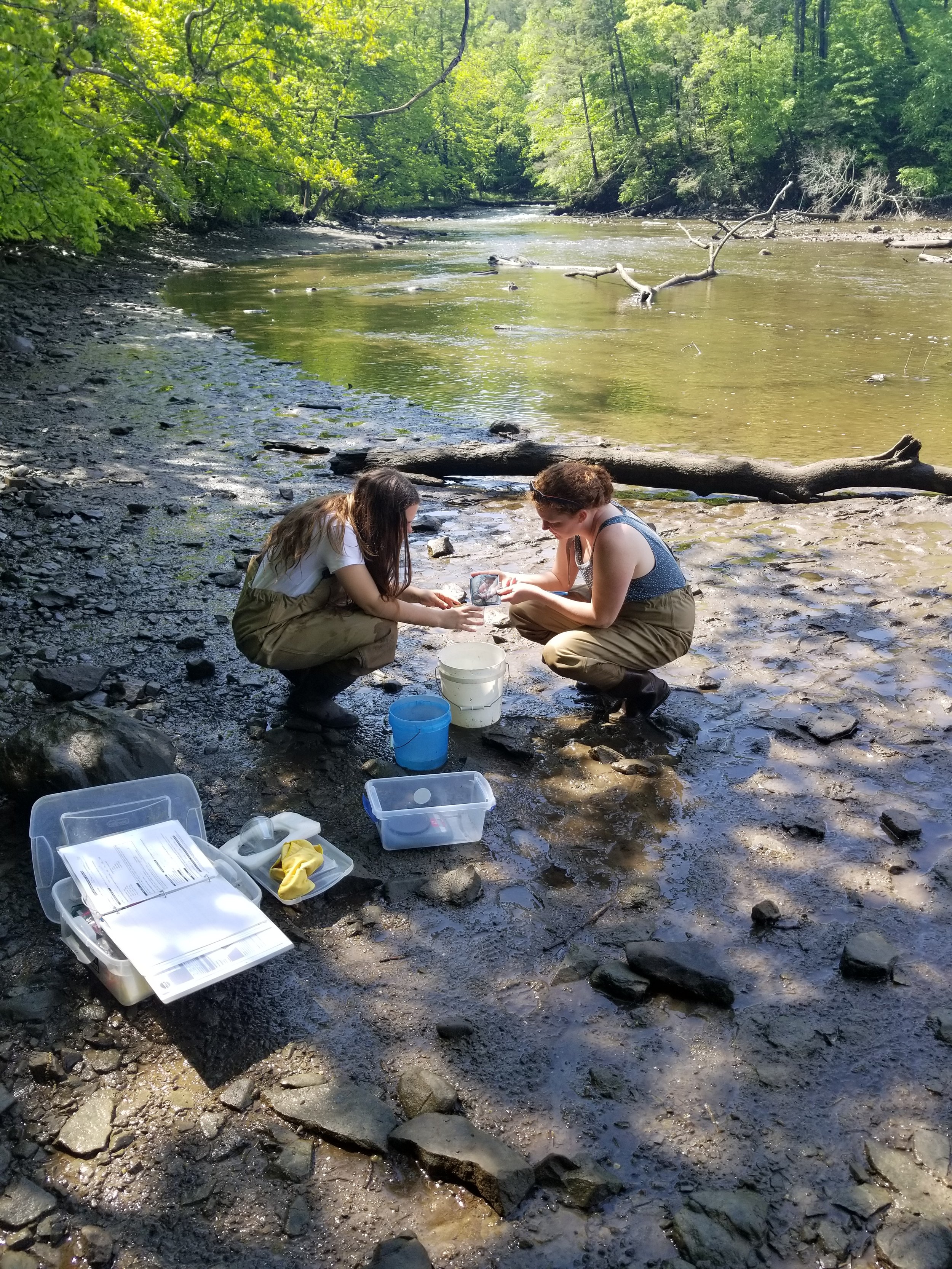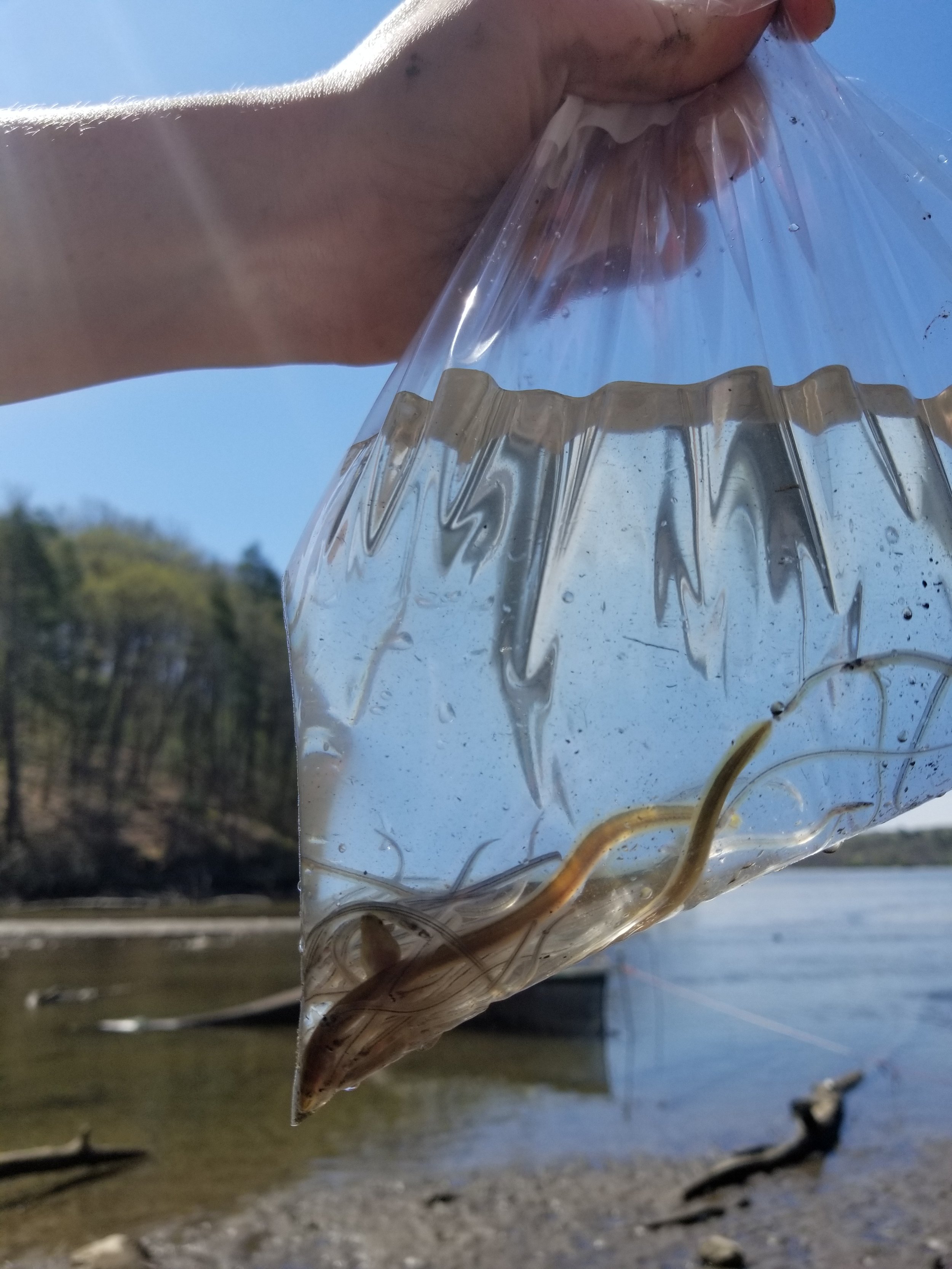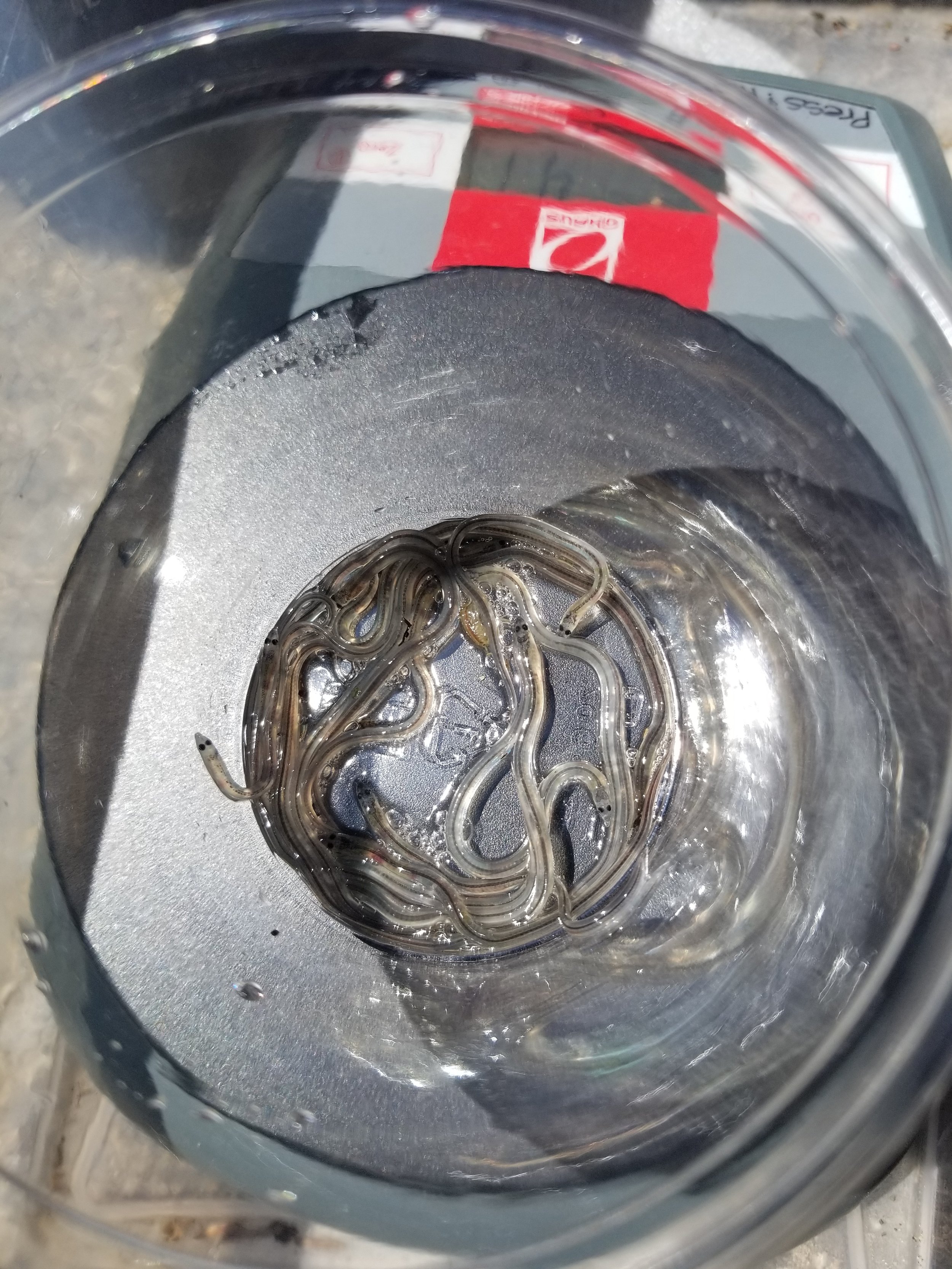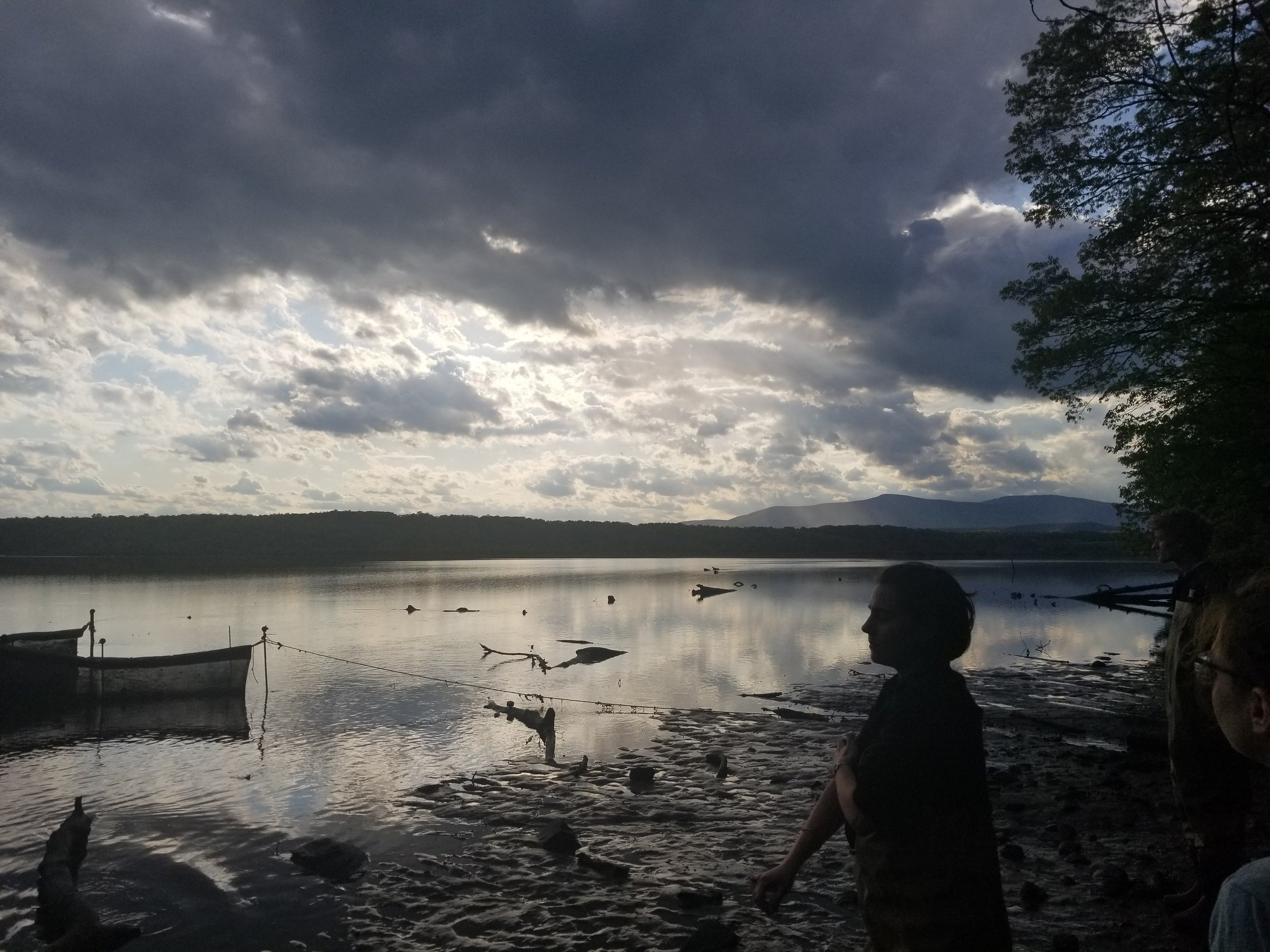Netting Glass Eels on the Saw Kill
An elver finds it’s way into the net and our hands
The International Union for Conservation of Nature red-listed the American Eel in 2014. Populations have been in drastic decline for decades, and in 2003 Hudsonia co-founder Bob Schmidt set up an eel net at the mouth of the Saw Kill to monitor the glass eels that make the great migration from the Sargasso Sea up into the Hudson River and into its tributaries each spring.
The one you see at right just drifted up on the currents, a journey that took a year.
Although humans have studied eels for thousands of years, much of their lives remain a mystery. They appear in Homer’s Iliad, and Aristotle suggested they grew in humid soil and may have come out of earthworms. Even young Sigmund Freud worked to determine how eels reproduce. Bu
t it wasn’t until 1920 that Danish biologist Johannes Schmidt discovered their spawning grounds in the Sargasso Sea. And it was only in 2021 that an eel was successfully tracked from Europe to somewhere near the Sargasso Sea.
No one has ever seen an eel breed, and when you listen to an expert you will hear “is believed” repeatedly.
Hudsonia alum Elise Heffernan and a student volunteer examine a bag of glass eels.
We’ve monitored our Saw Kill net every year since it was set-up in 2003. In 2008, it became part of a larger NYSDEC citizen science project. Each site is checked daily from mid-March to mid-May by groups of volunteers including students and community members. Hudsonia collaborates with the NYSDEC, the Hudson River National Estuarine Research Reserve (HRNERR), Bard College and the EUS Water Lab, and the Saw Kill Watershed Community to oversee the Saw Kill site, one of 14 currently monitored sites.
A bag of eels.
Environmental educator and former Hudsonia intern Ben Harris managing the Saw Kill net
Throughout their long lives, eels face many threats. As they ride the currents up from the Sargasso Sea, they are transparent to prevent detection by fish swimming under them. When they travel back as silver eels they are silver below and grey above so that fish and predatory birds cannot see them. Climate change, overfishing, dams and other obstructions threaten their survival.
Eels under study
The eels remain in our streams until they reach maturity, which can take up to twenty years. Then they head back to the river to travel back to the Sargasso Sea to breed.
We invite you to join us next spring!
Late evening eeling
Visit the NYSDEC’s American Eel Citizen Science page for more information on this project and the other sites involved. Visit the Saw Kill Watershed Community or the Bard College Community Science Lab to learn more about the Saw Kill and ways to get involved.
Hudsonia Reports:
Sigmund and His Eels, Biodiversity Blog, The University of Texas at Austin.







